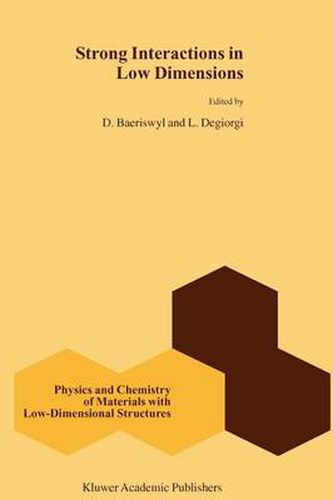Readings Newsletter
Become a Readings Member to make your shopping experience even easier.
Sign in or sign up for free!
You’re not far away from qualifying for FREE standard shipping within Australia
You’ve qualified for FREE standard shipping within Australia
The cart is loading…






This title is printed to order. This book may have been self-published. If so, we cannot guarantee the quality of the content. In the main most books will have gone through the editing process however some may not. We therefore suggest that you be aware of this before ordering this book. If in doubt check either the author or publisher’s details as we are unable to accept any returns unless they are faulty. Please contact us if you have any questions.
This book provides an attempt to convey the colorful facets of condensed matter systems with reduced dimensionality. Some of the specific features predicted for interacting one-dimensional electron systems, such as charge- and spin-density waves, have been observed in many quasi-one-dimensional materials. The two-dimensional world is even richer: besides d-wave superconductivity and the Quantum Hall Effect - perhaps the most spectacular phases explored during the last two decades - many collective charge and spin states have captured the interest of researchers, such as charge stripes or spontaneously generated circulating currents.
Recent years have witnessed important progress in material preparation, measurement techniques and theoretical methods. Today larger and better samples, higher flux for neutron beams, advanced light sources, better resolution in electron spectroscopy, new computational algorithms, and the development of field-theoretical approaches allow an in-depth analysis of the complex many-body behaviour of low-dimensional materials. The epoch when simple mean-field arguments were sufficient for describing the gross features observed experimentally is definitely over.
The Editors’ aim is to thoroughly explain a number of selected topics: the application of dynamical probes, such as neutron scattering, optical absorption and photoemission, as well as transport studies, both electrical and thermal. Some of the more theoretical chapters are directly relevant for experiments, such as optical spectroscopy, transport in one-dimensional models, and the phenomenology of charge inhomogeneities in layered materials, while others discuss more general topics and methods, for example the concept of a Luttinger liquid and bosonization, or duality transformations, both promising tools for treating strongly interacting many-body systems.
$9.00 standard shipping within Australia
FREE standard shipping within Australia for orders over $100.00
Express & International shipping calculated at checkout
This title is printed to order. This book may have been self-published. If so, we cannot guarantee the quality of the content. In the main most books will have gone through the editing process however some may not. We therefore suggest that you be aware of this before ordering this book. If in doubt check either the author or publisher’s details as we are unable to accept any returns unless they are faulty. Please contact us if you have any questions.
This book provides an attempt to convey the colorful facets of condensed matter systems with reduced dimensionality. Some of the specific features predicted for interacting one-dimensional electron systems, such as charge- and spin-density waves, have been observed in many quasi-one-dimensional materials. The two-dimensional world is even richer: besides d-wave superconductivity and the Quantum Hall Effect - perhaps the most spectacular phases explored during the last two decades - many collective charge and spin states have captured the interest of researchers, such as charge stripes or spontaneously generated circulating currents.
Recent years have witnessed important progress in material preparation, measurement techniques and theoretical methods. Today larger and better samples, higher flux for neutron beams, advanced light sources, better resolution in electron spectroscopy, new computational algorithms, and the development of field-theoretical approaches allow an in-depth analysis of the complex many-body behaviour of low-dimensional materials. The epoch when simple mean-field arguments were sufficient for describing the gross features observed experimentally is definitely over.
The Editors’ aim is to thoroughly explain a number of selected topics: the application of dynamical probes, such as neutron scattering, optical absorption and photoemission, as well as transport studies, both electrical and thermal. Some of the more theoretical chapters are directly relevant for experiments, such as optical spectroscopy, transport in one-dimensional models, and the phenomenology of charge inhomogeneities in layered materials, while others discuss more general topics and methods, for example the concept of a Luttinger liquid and bosonization, or duality transformations, both promising tools for treating strongly interacting many-body systems.